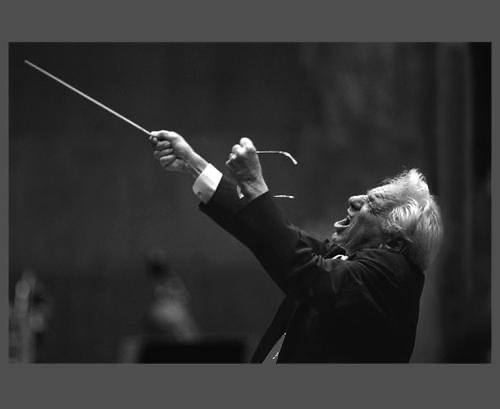In a world with music full of lyrics, electronic instruments, and complicated rhythms, one tends to stray from the purest form of music: classical music. This might just be the most underrated form of music we have today, most especially in the youth. Obviously, it is also not the most appealing as it tends to be long, has no lyrics, and is very old, but the many turned off by these reasons, often never truly hear peak classical music. Going into highschool, I was not a fan of classical music, for reasons such as these. It was not until I began to play with an orchestra that I started to develop a taste for it. Even from there, it took me about a year to actually like it. While it may not be as catchy or in accord with the music of today, I believe classical music is the pinnacle of music. Below are some of my favorites that I have dubbed “classical bangers” and that I feel challenge the stereotypes that have come to describe classical music.
Shostakovich’s Fifth Symphony
Perhaps one of the most emotionally deep pieces of classical music ever written, this symphony was written by Dmitri Shostakovich in 1937. It has an eerie and ominous start that takes a minute to build up, reaching a promenade-feeling section driven by the timpani and snare drum. The first movement’s climax is the call and response between the orchestra and the timpani that brings about a tense and gripping theme finally being brought back to light melody in the flute and strings.
The second movement is a testament to Shostakovich’s dry sense of humor. At the time of writing this symphony, Stalin was the ruler of the Soviet Union, and Shostakovich’s music became subject to criticism by the Soviet Press. In this light second movement, he mocks the criticism and in a way taunts the press with this antithesis of the overarching theme of the symphony.
The third movement is the deepest of them all. The strings bring out a sorrowful melody that slowly builds up to a relative max before dipping back down to a somber tune. Slowly rising again, the movement reaches its climax within the bold melody brought out by the xylophone over the vibrato from the violins, only to go into a heart wrenching section carried by the strings. They slowly bring the movement to a hopeful close.
The fourth movement only further proves the vital role of the timpani in an orchestra. Setting the tempo and mood, the timpani lead the strings into a whirlwind of fast and impressive dialogue. The drive continues into what I think sounds like an almost Star Wars-like couple of measures until a drastic mood change occurs with the timpani and the brass. The movement turns into another somber moment for the next while until it begins to resemble a military march. It builds up in intensity as it approaches a proud and determined ending, yet again the timpani hammering out a 1-4 drive, until the long-awaited ending is reached.
Dvorak’s Ninth Symphony
Known for its more common name, “Symphony From the New World,” this is Dvorak’s most famous piece. It was written in 1893, and its influence is from his first visit to America. Throughout the symphony, recurring themes pop up and they demonstrate the proficiency and genius of this Czech composer. Combining the tranquil with the intense, he shows his mastery of composition.
It’s perhaps most known for the 4th and final movement with the iconic theme that everybody recognizes. As this is my favorite symphony I may be a bit biased, but this is arguably the most proud and majestic close to a symphony ever written. Not only does it bring back the reminiscent themes of the earlier movements, but it combines them and elevates them to further grasp the heart of the listener. I can’t help but smile after hearing the end as it all resolves with a peaceful chord in the woodwinds and violins.
Hamlet Overture by Tchaikovsky
Perhaps the greatest Russian composer, Tchaikovsky, is known for his more famous pieces such as the Nutcracker Suite and his Romeo and Juliette Overture, yet his lesser known works are often underrated, the Hamlet Overture being one of them. Unlike the previously mentioned, this is just a single work and contains only one piece, whereas a symphony consists of multiple (usually four) movements. Tchaikovsky is able to steal your attention right off the bat with an intense timpani roll to open. The dramatic and dreary theme then is then played by the strings all leading up to the first of summits where the tam tam (a gong) and the brass deliver a fierce tune.
Throughout the piece, the theme switches from this harsh and dramatic sound and the beautiful melody of the oboe. It goes back and forth as if they’re passing it off to each other, yet the whole orchestra then rallies together for the final arc, and it builds until an ominous and resounding D-flat 7 chord comes out of nowhere gradually getting softer to release the tension. In the final minutes of the piece, the opening theme is played and it ends in a somber military-like march. The piece is heavily symbolic of and influenced by Shakespeare’s Hamlet, and it is amazing to see how the depth of emotion seen through the play can be captured and even daresay elevated through its expression in music.
These are just a few orchestral classical pieces that I find exciting and that I think disprove the arguments made that classical music is boring. It will never be everyone’s fancy, but it just may be yours if you give it a listen. I find that it’s very helpful to have in the background for working on homework, and maybe you’ll even develop a taste for it through that. You might even begin to do some research of your own and find more “Classical Bangers.”











